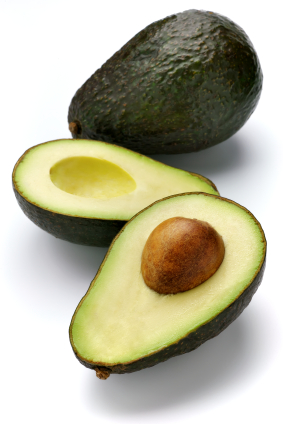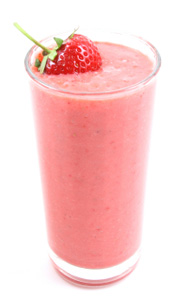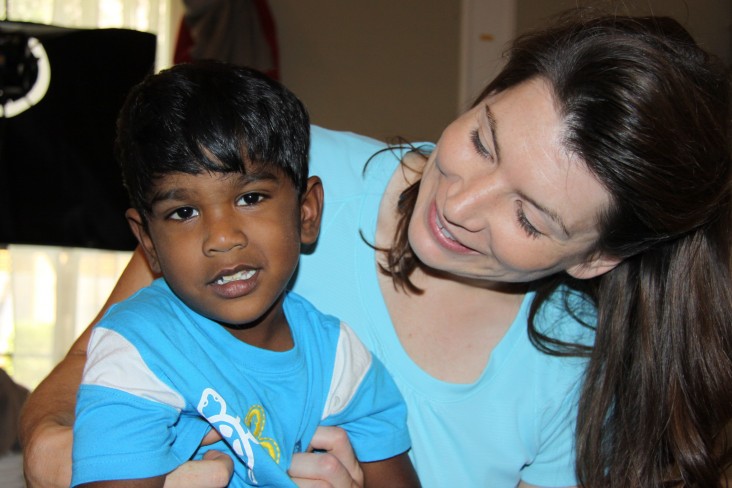So let’s begin with the most important meal of the day- yes we mothers are right -breakfast!
It is estimated that people with mobility impairments must exert 7x’s the energy to accomplish the same physical tasks as an able-bodied person, so it’s vital to properly fuel your child’s body every morning.
Now before pouring out a big bowl of processed cereal for breakfast to help give them their morning boost of energy – wait!!
This type of morning meal is loaded with sugar and refined carbohydrates that can contribute to weight gain, diabetes, cardiovascular disease and low immunity. While this breakfast option may provide a quick boost of energy, it will just as quickly lead to an energy crash and leave your child feeling tired and sluggish.
What is more beneficial is a quick & easy food source that also sustains energy – smoothies are the perfect answer!
These delicious shakes only take 5 minutes to make, and you and your family will never get bored of eating them because you can add or mix any of your favorite fruits into them.
Smoothies are not only high in complex carbohydrates to keep your child going all morning, but they’re also packed with muscle-building protein and immune boosting nutrients. On top of all these tasty health benefits, smoothies are also high in fiber which can help move things along and avoid constipation issues.
Beyond just being a healthy breakfast option, smoothies also make a great meal replacement option. Smoothies are easy to drink, making them an excellent choice for individuals who difficulty chewing or swallowing. Smoothies contain protein, healthy fats, vitamins and minerals, making them a well-balanced, nutrient dense meal. All you need are the following ingredients and a counter top or hand blender.
Enjoy!
Chocolate Avocado Smoothie

Ingredients:
- 1 small avocado
- 1 ripe banana
- 1/2 cup unsweetened chocolate almond milk
- 1/4 cup hemp hearts
- 3 tbsp cocoa powder
- 1 tbsp honey
Directions: Combine all ingredients in blender and buzz until smooth in consistency (add more milk if desired). Enjoy!
Pineapple Spinach Smoothie

Ingredients:
- 1 cup chopped pineapple
- 1 ripe banana
- 1 cup baby spinach leaves
- 1/2 cup plain Greek Yogurt
- 3/4 cup unsweetened almond milk
- 1 tsp chia seeds
Directions: Combine all ingredients in blender and buzz until smooth in consistency. Enjoy!
Strawberry Coconut Smoothie

Ingredients:
- 1 cup fresh or frozen strawberries
- 1 cup coconut milk (canned)
- 1/2 banana
- 1 handful spinach
- 1 scoop protein powder
- 1 tsp chia seeds
Directions: Combine all ingredients in blender and buzz until smooth in consistency. Enjoy!
Grounded Earth Protein Smoothie

Ingredients:
- ½ banana
- 1 ½ cup unsweetened vanilla almond milk (can substitute rice milk)
- 2 tsp almond butter
- ½ cup dates (pitted)
- ½ tsp spirulina powder (can substitute greens or sea vegetable powder)
- 1 tsp oat bran
Directions: Combine all ingredients in blender and buzz until smooth in consistency. Enjoy!
*Spirulina is a nutrient dense algae that can be found in your local health food store and it doesn’t taste bad – I promise! Recipe generously provided by Lisa Kapp.
Joanne Smith
www.fruitfulelements.com
Joanne Smith is a Certified Nutritional Practitioner. She is the co-author of Eat Well, Live Well with Spinal Cord Injury & Other Neurological Conditions.
If you would like to have a private appointment with her to talk about your child’s nutrition problems, you may contact her at: joanne@neurocorephysiotherapy.com













